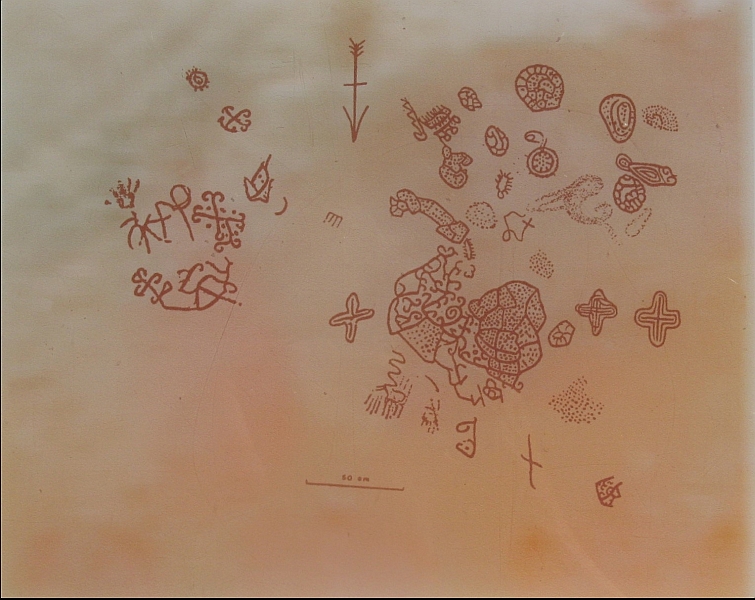Indian Inscriptions
 Marka Indjan was a perfectly situated simacan cave (star watchers' cave) high up in the rock.
In the Bonairean mythology the word "simacan" means a meteorite, a comet,
or a person who watches the stellar sky - the ancient astrologer.
In Carib-Arawak mythology the name Simacan represents a falling star and appears as the name
of one of the first ten Son gods of the Creator God Loquo.
Marka Indjan was a perfectly situated simacan cave (star watchers' cave) high up in the rock.
In the Bonairean mythology the word "simacan" means a meteorite, a comet,
or a person who watches the stellar sky - the ancient astrologer.
In Carib-Arawak mythology the name Simacan represents a falling star and appears as the name
of one of the first ten Son gods of the Creator God Loquo.
This particular cave called "Mati" (meaning high up there) faces north and from there the simacan looked at two northern horizontal lines - the sea horizon and the horizon of the coastline. The simacan used the large rocks on the coastline, in combination with the stalactite points hanging in the outer edge of his cave, as star tracking coordination points.
The oldest simacan period was considered belonging to what archeologists called the "Saladoide or Igneri cultures" established on our Caribbean islands around 300 BC.
The simacan read the stars for dates - places in time and the changing situations of the moon (Cai, Wanico). He observed the falling stars and meteorite showers and knew from experience when planets like Nima, Caiwono (Mars and Venus) and comets (Limacani) would come and have their effect on our weather conditions. The simacan understood when solar or moon eclipses would occur from historical observations. He was the living calendar and almanac of his people.
The simacan registered the important happenings in the community - the day of births, deaths and other important dates according to what was going on such as when the turtles came to lay their eggs, when is the best time to travel or to go fishing, an important child was born, when to plant or when to cut trees and burn charcoal.
In his inscriptions stars are symbolized as a cross, bright stars as an outlined cross, very bright stars as a double outlined cross. Double outlined crosses wound up in a thread are the brightest planets, a cross with a kite tail is a birdlike constellation like Cassiopeia which looks like the "M" of the flying Manuwa. Perpendicular crosses are ascending stars and scissor shape crosses are descending stars.
Other inscriptions are high sea fisherman navigation maps that refer to the sea currents and to local beaches with safe landing sites around the dangerous northeastern rocky coast of the island - Boka Onima, Boka Lagun, Boka Washikema and Boka di Lac.